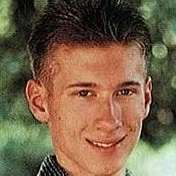
1981 - 1999
Eric David Harris
Summary
Name:
Years Active:
1999Birth:
April 09, 1981Status:
DeceasedClass:
Mass MurdererVictims:
8Method:
ShootingDeath:
April 20, 1999Nationality:
USA
1981 - 1999
Eric David Harris
Summary: Mass Murderer
Name:
Eric David HarrisStatus:
DeceasedVictims:
8Method:
ShootingNationality:
USABirth:
April 09, 1981Death:
April 20, 1999Years Active:
1999bio
Eric David Harris was born on April 9, 1981, in Wichita, Kansas, to Wayne and Kathy Harris. His father was a U.S. Air Force transport pilot, which required the family to relocate frequently throughout Eric’s early childhood. The Harris family eventually settled in Littleton, Colorado, in 1992, where Eric enrolled in Columbine High School. Described as intelligent but socially distant, Eric often expressed anger and contempt for authority and society in his writings. He had a fascination with weapons, explosives, and military tactics and maintained a website that contained violent fantasies, including threats against classmates and instructions for building bombs. Psychologists later described Harris as exhibiting traits of narcissism, psychopathy, and sadism, although he was never formally diagnosed before his death.
Dylan Bennet Klebold was born on September 11, 1981, in Lakewood, Colorado, and raised in a middle-class household near Columbine. Known as shy and intelligent, Klebold excelled academically but struggled with chronic depression and feelings of isolation. He wrote extensively about his emotional turmoil, suicidal ideation, and resentment toward peers in his journals. Although quieter and less overtly aggressive than Harris, he harbored deep anger and a desire for revenge against people he perceived as responsible for his unhappiness. FBI behavioral analysts later concluded that Klebold was primarily motivated by self-hatred and suicidal intent, while Harris’s motivations were rooted in a desire for power, destruction, and infamy.
The two met in 1993, while attending Ken Caryl Middle School, and quickly formed a close friendship. They bonded over shared grievances, fascination with violence, and a mutual sense of alienation. By the time they reached high school, they were considered inseparable, though reports about their social status were conflicting. Some accounts described them as bullied outcasts, while others suggested they maintained active social circles and participated in school activities. They were not, contrary to early media reports, members of a group known as the "Trenchcoat Mafia," though they frequently wore long black trench coats as part of their personal style.
Their descent into violence began taking shape in 1998, when they were arrested for breaking into a van and stealing equipment. They were sent to a juvenile diversion program and completed it successfully, giving the appearance of rehabilitation. However, during this same period, Harris and Klebold were secretly amassing firearms and materials to create bombs. Their writings, journals, and videos revealed their intent to carry out a large-scale attack that they hoped would surpass the 1995 Oklahoma City bombing in destruction and death toll.
murder story
On April 20, 1999, the final plan that Eric Harris and Dylan Klebold had spent nearly a year devising came to fruition. That morning, they arrived at Columbine High School heavily armed with shotguns, a carbine rifle, a semi-automatic handgun, and over 90 improvised explosive devices, including propane bombs designed to destroy the cafeteria and kill hundreds of students. The main bombs failed to detonate as planned, altering the course of the massacre but still resulting in one of the deadliest school shootings in U.S. history.
At approximately 11:19 a.m., Harris and Klebold began their attack outside the school cafeteria, opening fire on students eating lunch outside. They then entered the school, continuing their rampage through hallways and classrooms. The most devastating portion of the massacre occurred in the library, where the pair murdered 10 students and wounded many others over the course of just seven minutes. They taunted victims, asked if they believed in God, and deliberately targeted certain individuals while letting others go. The calculated and chaotic nature of the attack left survivors traumatized and law enforcement scrambling to respond.

In total, the pair murdered 12 students and one teacher, Dave Sanders, who was killed while attempting to protect students. Twenty-three others were wounded, some critically. After nearly 50 minutes of terror, Harris and Klebold returned to the library, where they committed suicide at approximately 12:08 p.m., ending the massacre.
The Columbine High School massacre shocked the United States and the world, sparking intense debates over gun control, bullying, mental health, media influence, and school security. The term "Columbine" quickly entered the cultural lexicon as a symbol of mass shootings and school violence. It became the reference point for future shootings, inspiring a wave of copycat crimes known as the “Columbine effect.” Many subsequent attackers cited Harris and Klebold as inspirations, idolizing them as martyrs or revolutionaries — a phenomenon that continues to concern law enforcement and psychologists today.
Investigations later concluded that the pair’s motives were complex and multifaceted. Harris was described by FBI profiler Dwayne Fuselier as a remorseless psychopath seeking destruction and notoriety, while Klebold was characterized as a deeply depressed teen driven by despair and anger. Their collaboration — Harris’s cold, calculated aggression paired with Klebold’s emotional volatility — created a uniquely lethal partnership.